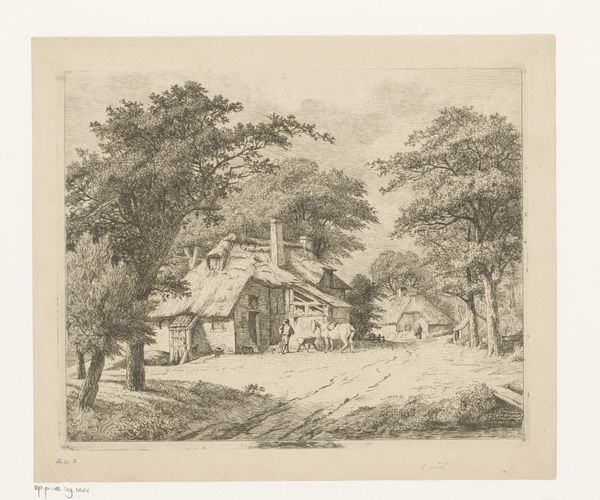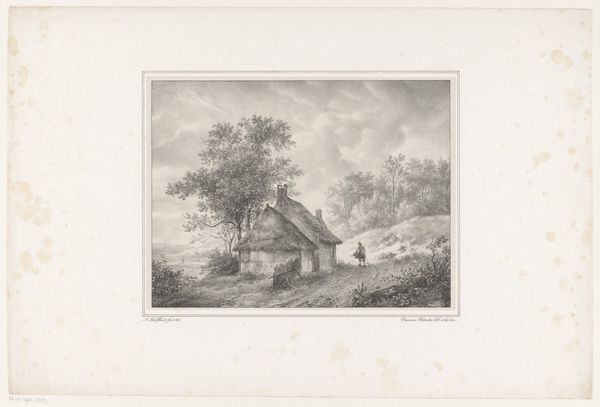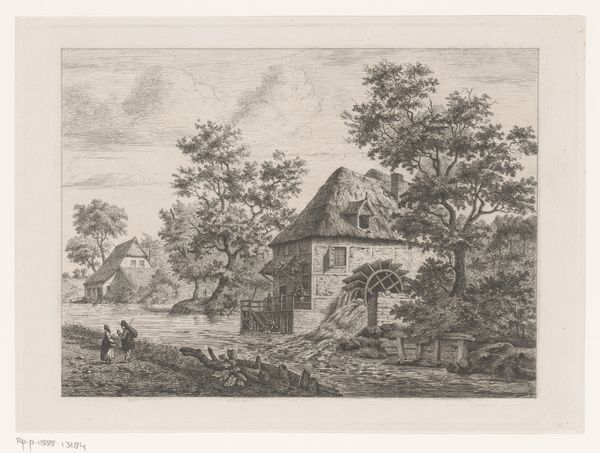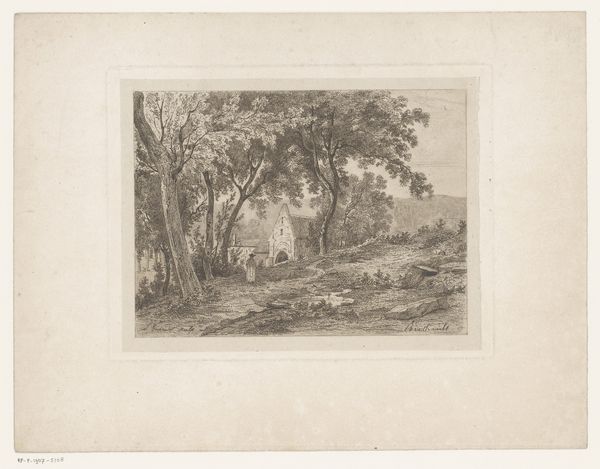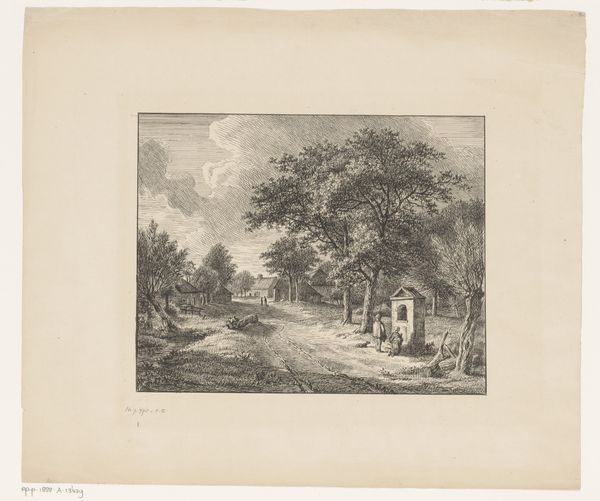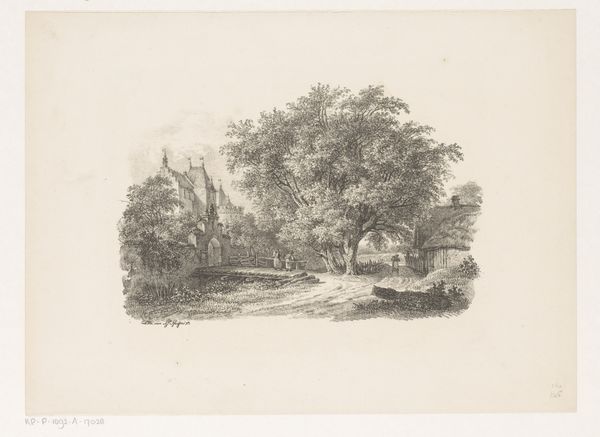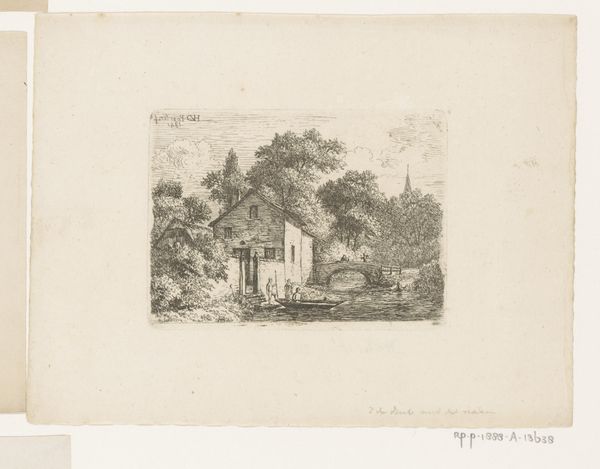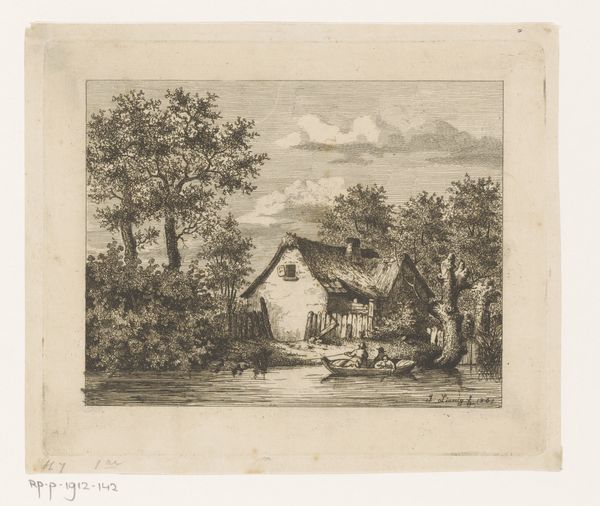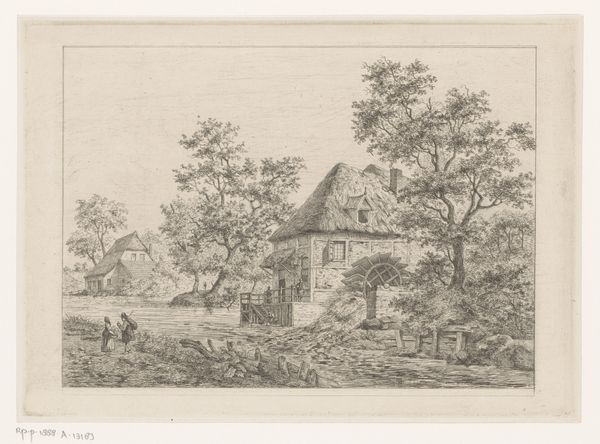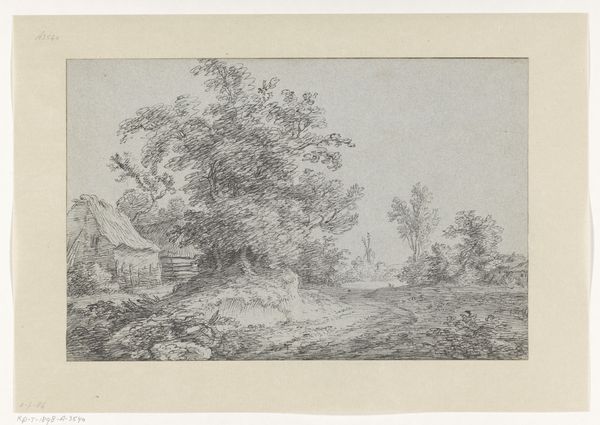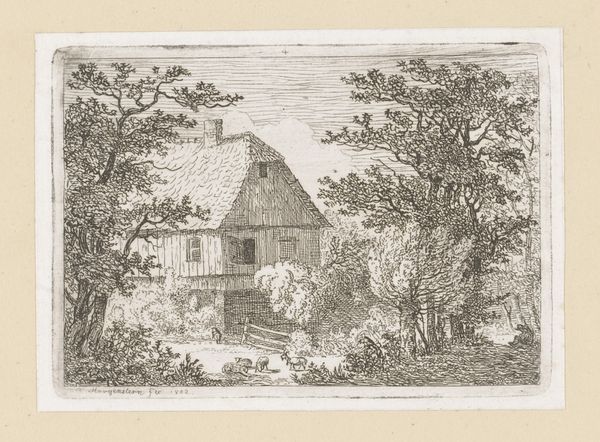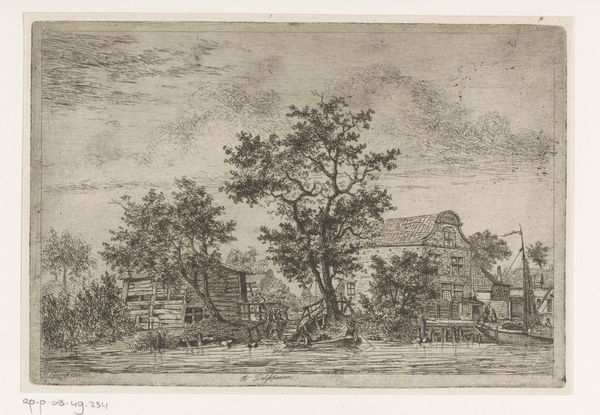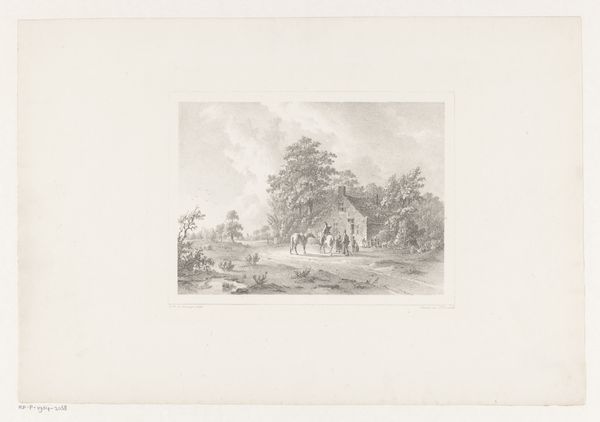
Wit paard bij een voerbak voor een boerderij 1842
0:00
0:00
etching
#
dutch-golden-age
#
etching
#
landscape
#
etching
#
realism
Dimensions: height 208 mm, width 253 mm
Copyright: Rijks Museum: Open Domain
This print, White Horse by a Feeder at a Farm, was made by Hendrik Jozef Franciscus van der Poorten using etching, a printmaking technique that dates back centuries. The process begins by covering a metal plate with a waxy, acid-resistant coating. The artist then draws through this coating with a sharp needle, exposing the metal beneath. When the plate is dipped in acid, the exposed lines are etched, creating grooves. Ink is then applied to the plate, filling these grooves, and the surface is wiped clean. Finally, paper is pressed against the plate, transferring the ink and creating the print. In this case, the etching allows for a great deal of intricate detail, from the trees to the thatched roof of the farmhouse. It is evocative of the laborious realities of rural life in Van der Poorten’s time, highlighting the beauty and industry of the working landscape. Considering the materials and making of this print, the traditional distinction between fine art and craft blurs, offering a deeper appreciation for the artwork’s full meaning.
Comments
No comments
Be the first to comment and join the conversation on the ultimate creative platform.
